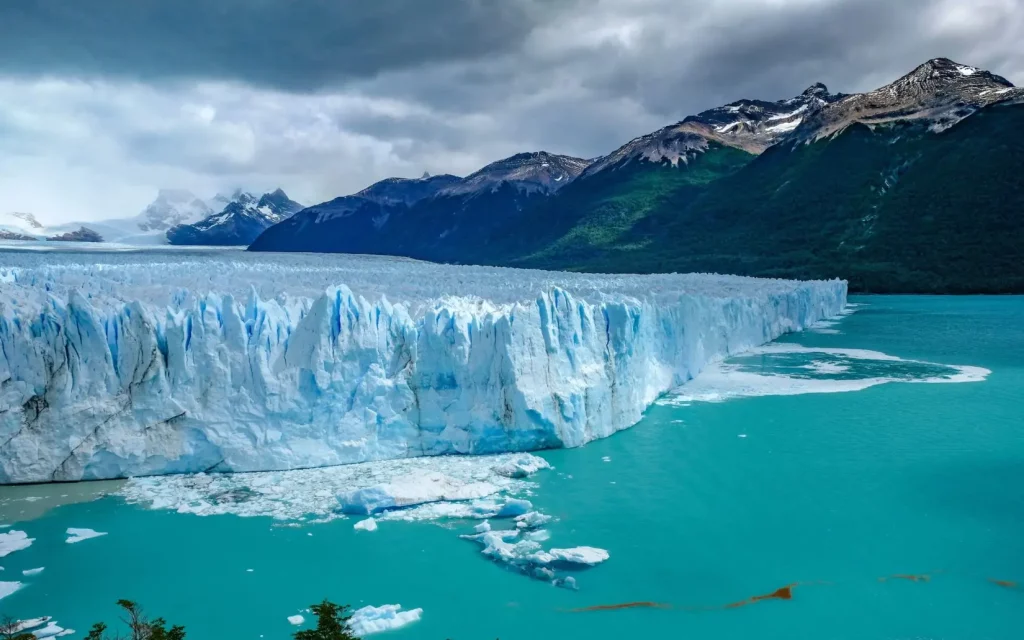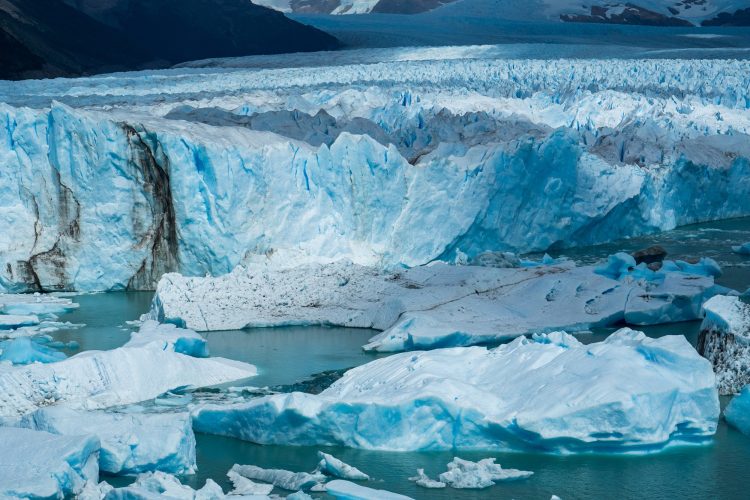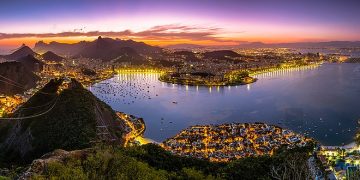Few places on Earth evoke raw natural wonder like Patagonia. Stretching across southern Argentina and Chile, this remote region of jagged peaks, windswept plains, and massive icefields has drawn trekkers, climbers, and nature lovers for decades. But in 2025, the landscapes they come to explore are rapidly shifting. Patagonia’s iconic glaciers—once seemingly eternal—are melting at alarming rates. And with this melt comes transformation: new lakes are forming, established trekking routes are rerouted or closed, and guides are rewriting the trekking playbook in real time. What was once a wilderness of pristine stillness is now a case study in the visible impacts of climate change. For travelers drawn to wild frontiers, Patagonia remains one of the world’s most breathtaking destinations—but now, it also asks them to reckon with what happens when nature changes faster than maps can keep up.
The Great Retreat: Patagonia’s Glaciers in Crisis
Glaciers have long defined Patagonia’s identity, both culturally and ecologically. The Southern Patagonian Ice Field, one of the largest extrapolar ice masses on Earth, feeds some of the most well-known glaciers in the region—Perito Moreno, Viedma, Grey, and more. But these giants are shrinking. In the past few decades, satellite data and field research have confirmed that many of Patagonia’s glaciers are retreating faster than any others on the planet outside of Greenland and Antarctica.
By 2025, the consequences are no longer theoretical. Entire trekking routes are being altered because trails that once hugged frozen walls now border fast-expanding glacial lakes. Ice bridges are collapsing earlier in the season. Crevasse zones are growing wider, and moraine paths have become unstable due to slush and sudden rockfalls. Glacial runoff is carving new channels through valleys, creating erosion in places that once seemed solid.
In areas like El Chaltén, near Argentina’s Mount Fitz Roy, guides report dramatic seasonal variations from one year to the next. Lago Torre, a popular endpoint for the classic trek to Cerro Torre, is growing steadily larger and more fragmented due to the thinning of Glaciar Torre. In Chile’s Torres del Paine National Park, parts of the trail system near Glacier Grey have had to be rerouted due to flooding and unstable ice sections.
These are not isolated incidents. They are part of a broader, urgent pattern reshaping the very geography of the Patagonian wilderness.
From Adventure to Adaptation: How Local Guides Are Responding
The changes are forcing a new generation of guides to do more than lead hikes—they now play the roles of scientist, environmental educator, and emergency planner. Many guides in 2025 begin the season not by reviewing route popularity, but by walking the trails themselves to confirm whether the terrain still exists in its previous form.
For example, the Paso del Viento trek, a demanding route that skirts the edge of the Southern Ice Field, has become increasingly unpredictable. Sections once traversable by foot now require gear changes, raft crossings, or detours through scree fields exposed by retreating ice. Trekking companies are responding by developing alternative circuits that emphasize safer terrain while still offering glacier views. Some even integrate data from local weather stations and glaciologists to adjust itineraries in real time.
This level of flexibility is new—and necessary. In the past, fixed itineraries were the norm. Now, clients are often briefed on multiple possible outcomes, and physical readiness is matched by mental adaptability. For travelers, this means learning to approach Patagonia with openness, humility, and trust in their guides’ evolving expertise.
Rising Interest in Sustainable and Low-Impact Models
The stark changes in Patagonia’s glaciers are not just affecting trails—they’re reshaping the way tourism is practiced and perceived. In 2025, there is a clear trend toward slower, more conscious travel in the region. Tour operators are increasingly promoting sustainability not as an optional add-on, but as central to the Patagonian experience.
This shift is visible in the rise of low-impact trekking programs. These often involve smaller groups, minimal waste policies, and a strong emphasis on education. Hikers are not only taught about safety and navigation but also about the geological processes behind glacial retreat, the ecosystems at risk, and the ways their presence can support or harm fragile environments.
Some agencies now offer “glacier witness” expeditions—multi-day treks focused specifically on observing and understanding climate change in action. Participants may camp near collapsing ice walls, take part in citizen science projects like water quality testing, or meet with indigenous Mapuche communities affected by shifting water sources.
There’s also a growing preference for local logistics: porters from nearby villages, farm-sourced meals, biodegradable equipment, and solar-powered base camps. These practices aren’t just trend-driven; they’re responses to a landscape whose fragility has become impossible to ignore.
New Routes, New Risks, and New Rewards
While some classic trails are under threat, the changing environment is also opening up new possibilities. As glaciers retreat, they reveal valleys and passes previously covered for millennia. In some areas, these emerging landscapes are already being mapped for future trekking routes. However, exploring these newly exposed areas comes with challenges—unfamiliar terrain, hidden crevasses, and no historical data to guide behavior.
Yet for some travelers, this very uncertainty is part of the appeal. There’s a rawness to walking through a landscape that no generation has seen before—a feeling of time unfolding in real time. It’s also a call to responsibility. Witnessing these changes firsthand creates a deeper sense of urgency and care among those who tread lightly and return home with stories not of conquest, but of observation.

In Chile’s Aysén region, a new multi-day trek known as the Route of the Melting Giants is attracting adventurous travelers who want to see glacier retreat without glorifying it. The route passes through dramatic post-glacial terrain—fresh rock fields, meltwater lagoons, and shifting moraines—while emphasizing climate education, carbon offsets, and regenerative tourism practices.
These new routes reflect a changing ethos in adventure travel: it’s not about ticking off peaks but about forming a relationship with a living, changing Earth.
When Paradise Turns into a Warning Sign
For many travelers arriving in Patagonia in 2025, the experience is emotionally complex. The beauty remains staggering—ice cliffs, wind-sculpted forests, and silent, starlit skies that feel infinite. But woven into that awe is a quiet ache, a sense that this paradise is impermanent. That its melting ice is not only a visual spectacle, but a warning sign of deeper ecological distress.
Some visitors speak of feeling helpless in the face of such grandeur and vulnerability. Others are galvanized, returning home more committed to climate action or conservation. For many, it’s the first time they’ve seen climate change not as a headline, but as a landscape.
Patagonia doesn’t preach. But it shows. It shows how fragile beauty can be, how time moves faster than politics, and how wildness is never guaranteed. Standing near a calving glacier in 2025 feels different than it did even ten years ago. The thunderous crack, the crashing ice, the rising lake—it all feels less like drama and more like a requiem.
Preparing for a 2025 Trek in Patagonia
If you’re planning a Patagonian adventure in 2025, preparation involves more than buying gear or booking a flight. It means researching which routes are currently viable, staying informed about weather patterns, and choosing tour providers who operate responsibly. You’ll also want to check if any sections of your planned trail have been rerouted due to ice collapse, lake overflow, or rockslide.
Physical preparation remains crucial, especially as new routes often include steeper ascents and less predictable terrain. But mental flexibility is just as key. Don’t be surprised if your itinerary changes with little notice, or if conditions demand detours. Patagonia is teaching travelers to move with nature, not against it.
Above all, be respectful of the land. Pack out all waste, avoid off-trail wandering, and listen closely to your guides. Their knowledge is not just technical—it’s local, lived, and evolving.
Conclusion: A Living Classroom in Climate Change
Patagonia in 2025 is still a place of magic. But it’s no longer just a backdrop for bucket-list adventures. It’s become a living classroom for climate awareness, where every receding glacier tells a story of change—and every hiker becomes part of that story.
For travelers who want more than postcard views, who crave a connection to nature that’s real, immediate, and sometimes heartbreaking, Patagonia remains unrivaled. But it asks something in return: to witness responsibly, to learn deeply, and to leave no trace—except maybe a renewed commitment to the world beyond the trailhead.





















